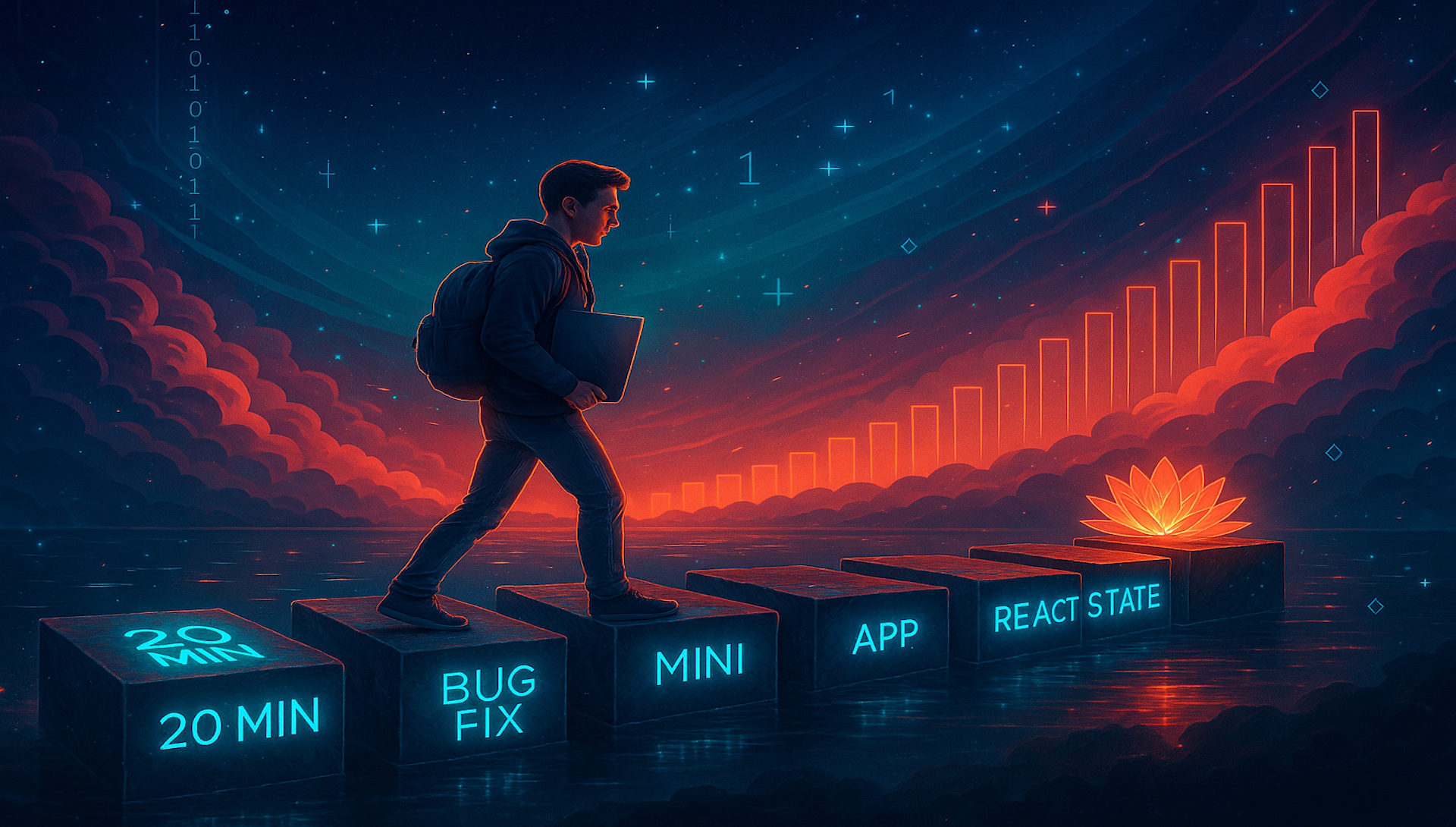The Secret to Staying Consistent When Learning to Code (Even When You're Tired)
9/23/2025

Learning to code feels like unlocking superpowers—until reality hits: you're exhausted after work, staring at your laptop, wondering if Netflix might be a better choice than debugging. 😮💨 We've all been there.
Here's the truth: the trickiest part of becoming a developer isn't writing your first line of JavaScript or building your first app. It's showing up consistently, even on days when your brain is begging for rest.
But here's the good news: you don't need to grind for hours or rely on sheer willpower. Staying consistent is about strategy, not ⚡stamina ⚡.
Why Consistency Beats Intensity
Many beginners treat coding like a hackathon: binge tutorials, push through late nights, then collapse. It feels productive in the moment, but leaves you burnt out and forgetful. 😵💫
Why consistency matters more:
- Muscle memory for problem-solving builds slowly with repetition.
- Short, steady sessions create stronger retention than sporadic, marathon-like sessions.
- Regular exposure prevents "What was a callback again?" brain fog.
Think of it like learning Spanish: you wouldn't memorize the entire dictionary in a weekend, right? You'd practice a little every day. Coding works the same way. 🌱
Practical Hacks to Stay Consistent
Consistency doesn't just happen—it requires strategies that lower the barrier to entry and keep you coding even when your energy is low.
1. The 20-Minute Rule
Too tired to code? Tell yourself: "Just 20 minutes." You'll either stop guilt-free or—surprise—keep going. Over time, those micro-sessions stack up into real progress. ⏱️ Even 10-15 lines of code add up to hundreds of lines over a month.
2. Micro-Projects Over Mega-Projects
Planning to build Spotify from scratch sounds exciting, until motivation runs out. Instead, create mini-projects like:
- ✨ A quote generator.
- A personal budget tracker. 💰
- 🌦️ A weather widget.
- A random color palette creator. 🎨
- 🃏 A flashcard app for learning syntax.
These small wins boost confidence and provide tangible results you can actually share.
3. Build Rituals, Not Just Routines
Consistency sticks when you pair coding with cues:
- ☕ Coffee? → open VS Code.
- 🎶 Lo-fi beats? → review yesterday's code.
- ⏰ Timer? → tackle one bug.
The trick? Keep the ritual pleasant. If mornings drain you, code later when your brain is naturally more alert.
4. Track Progress Like a Game
Gamify your learning: use streak trackers, GitHub contribution graphs, sticky notes on a wall, or track your streak through Kadmía’s built-in challenges. 🏅 The point isn't just collecting numbers—it's keeping practice fun and visible so you stay motivated.
Add rewards too: hit 7 days in a row? Treat yourself to a new keyboard sticker pack or that fancy to-go latte.
5. Use Energy Matching
Not every task requires max brainpower. On low-energy days, try reading documentation, cleaning up code, or reviewing concepts instead of tackling a big feature. 📚 Think of it as "maintenance coding": less intense, but it keeps your momentum alive.
Mindset Shifts That Make Coding Stick
Consistency isn't just about shortcuts. It's about changing your mindset towards progress, failure, and the long game.
💡 Progress, Not Perfection
Your goal isn't to be the fastest developer—it's to be the most consistent. Consistency compounds; speed comes later. Think of it as building compound interest for your brain.
Embrace "Good Enough" Days ✅
Some days, you'll only fix a semicolon error. Other days, you'll build a feature from scratch—both count. The win isn't how much you did, it's that you kept the streak alive.
🎉 Celebrate the Small Wins
Solved a bug? Finally understood React state? Note it down, share it, or treat yourself to your favorite snack. 🍩 These celebrations not only feel good, they also wire your brain to associate coding with progress.
Consistency is a Skill
Here's the real secret: consistency isn't about discipline. It's about designing systems that make coding the default choice. Create rituals, track small wins, and lean on tools that make the journey less about grind and more about growth, like Kadmía, where you can turn passive learning into active challenges that help your skills stick without the overwhelm.
If you're ready to code with less burnout and more momentum, we are here to keep you moving forward, one challenge at a time. 🚀


